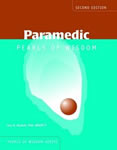11/22/2022· Telecommunication
Revenue Boost For Automotive Industry From Cellular Connectivity Outweighs SEP Licensing Costs
By: Keith Mallinson
The automotive industry is being revolutionized by continuous cloud connectivity, autonomous driving technologies, drive train electrification and shared mobility. These transformations are being facilitated in part by the standardized cellular technologies now commonly implemented in “connected vehicles” or “CVs”.














